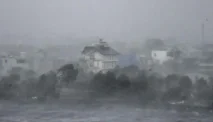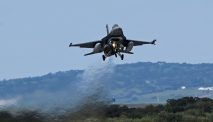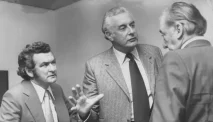Diksia.com - North Korea has invited delegates from China and Russia to mark the ceasefire, which it sees as a victorious moment in the “Fatherland Liberation War.” The celebrations are expected to end with a huge military parade in the capital, Pyongyang, at which leader Kim Jong Un will present nuclear-capable missiles aimed at neighboring countries and the mainland of the United States (US).
The mood was different in South Korea, where President Yoon Suk Yeol invited dozens of foreign war veterans to honor the soldiers who died in the 1950-1953 conflict that killed and injured millions and sparked decades of hostility between Korea and the United States.
President Yoon is likely to use this warning to highlight the growing threat to North Korea and strengthen its homeland defenses and alliance with the US.
Tensions between the two countries have reached an all-time high in recent years as the pace of North Korean missile tests and joint US-South Korean military exercises have accelerated in a cycle of reciprocity.
These tensions are a renewed reminder that the ceasefire has placed the Korean Peninsula in a technical state of war. Throughout their 70 years of diplomatic ups and downs, South and North Korea have always viewed each other as existential threats, which is essentially why ceasefires have never been replaced by peace treaties as originally intended.
North Korean state media on Wednesday highlighted the arrival of a Russian delegation led by Defense Minister Sergei Shoigu, who was greeted at Pyongyang Airport by senior North Korean officials, including Defense Minister Kang Sun Nam. The ruling Chinese Communist Party also dispatched a mid-level official, Li Hongzhong, hoping to facilitate further bilateral exchanges.
For Kim, taking Shoigu and Li to Pyongyang’s main square to witness a huge parade of foot soldiers, tanks and rockets is the biggest achievement to show his home audiences to mark the anniversary, said Park Won Gon, a professor at Ewha University in Seoul.
Park said inviting the Chinese and Russian delegations may also reflect Kim’s concern about strengthening security cooperation between the US and South Korea, which includes major joint military exercises, increased deployment of US strategic military assets and a new round of nuclear emergency planning meetings .
“The strengthening of the nuclear deterrent strategy between South Korea, the United States and Japan, as well as military actions such as the landing of a ballistic missile submarine (in South Korea) pose a very great burden and threat to North Korea,” Park said. “With North Korea having limited ability to take these steps on its own, it will be important (for Kim) to emphasize working with Moscow and Beijing for a joint response.”
For South Koreans, the most important outcome of the 1953 armistice was the signing of the U.S.-South Korea Mutual Defense Treaty, which was primarily aimed at allaying South Korea’s security concerns about the armistice and continues to form the basis of the two countries’ agreement military alliance.
In the face of the growing nuclear threat, Yoon is currently asking for stronger assurances from the US that it will quickly and decisively use its nuclear weapons to defend South Korea in the event of a North Korean nuclear attack.
Thousands of people are expected to attend a ceasefire commemoration ceremony in the South Korean port city of Busan on Thursday (27 July), a burial site honoring UN soldiers who died in the war.
“Despite the many provocations, challenges, misunderstandings and even deaths since the signing of the ceasefire agreement, the agreement has generally been in place for 70 years,” Andrew Harrison, a British lieutenant general who served as deputy commander at the United Nations Command, said in a press conference on Monday (24/07).






